
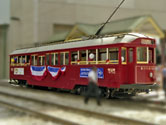



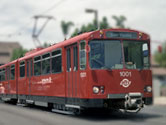
 |
Illinois Railway MuseumAmerica's Largest Railroad Museum |

The Illinois Railway Museum, as you see it today, is the result of decades of effort by a dynamic group of dedicated volunteers. All of the buildings, track, locomotives and cars were assembled here at Union on what was once farmland. Our main line trackage was laid on the vacant right-of-way of the Elgin & Belvidere Electric railway. Why would rational adults freely contribute so much of their time and treasure to creating this repository of railroad history? The Illinois Railway Museum is probably the ultimate railroad historian special interest group. Originally formed to preserve one important piece of rolling stock, it has evolved into an educational and historic preservation organization recreating possibly the largest operating demonstration railroad showcase on the North American continent.
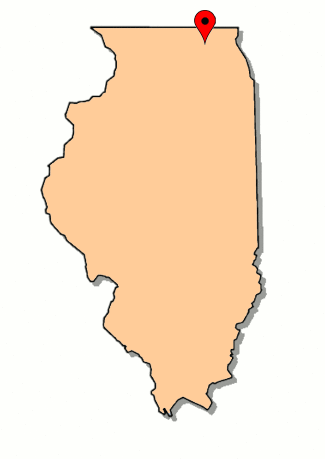 Spread out on 100 acres of former farmland, adjacent to a Chicago & North Western (now Union Pacific) mainline, the
Illinois Railway Museum maintains a massive collection of both operating and static railroad, interurban, and trolley equipment for public display and excursion service -- currently about 450 total pieces of historic railway and transit equipment.
Located northwest of Chicago in tiny Union, Illinois, the roots of the museum date back as far as World World II to the Illinois Electric Railway Museum. Today the museum operates an active steam backshop for rebuilding steam locomotives and an active diesel shop for refurbishing and maintaining its first and second generation diesel-electric fleet. A stretch of electrified mainline -- former Elgin & Belvidere Electric Railway trackage -- is used for operating scheduled and special demonstration trains and transit movements.
Spread out on 100 acres of former farmland, adjacent to a Chicago & North Western (now Union Pacific) mainline, the
Illinois Railway Museum maintains a massive collection of both operating and static railroad, interurban, and trolley equipment for public display and excursion service -- currently about 450 total pieces of historic railway and transit equipment.
Located northwest of Chicago in tiny Union, Illinois, the roots of the museum date back as far as World World II to the Illinois Electric Railway Museum. Today the museum operates an active steam backshop for rebuilding steam locomotives and an active diesel shop for refurbishing and maintaining its first and second generation diesel-electric fleet. A stretch of electrified mainline -- former Elgin & Belvidere Electric Railway trackage -- is used for operating scheduled and special demonstration trains and transit movements.

See also our complete Illinois Railway Museum featured scrapbook in Preservation
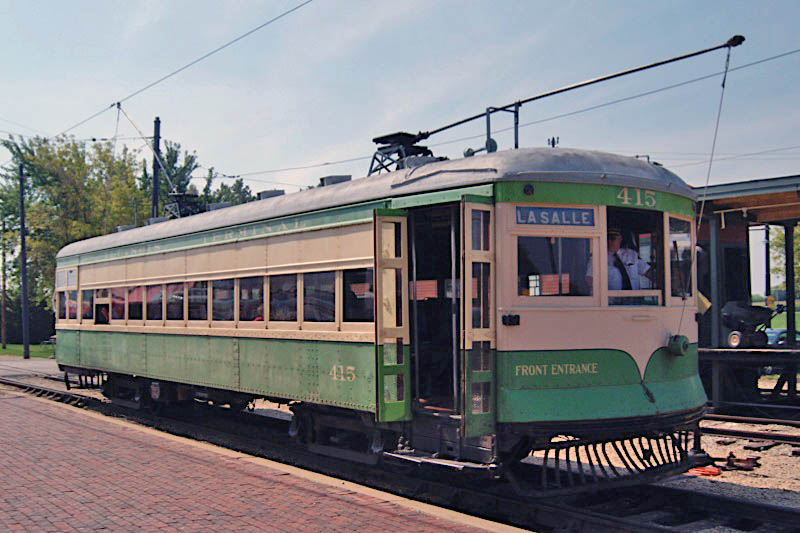
Illinois Terminal #415
Union, Il / Sep 2009 / RWH


Illinois Terminal #415
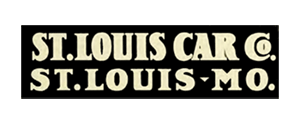
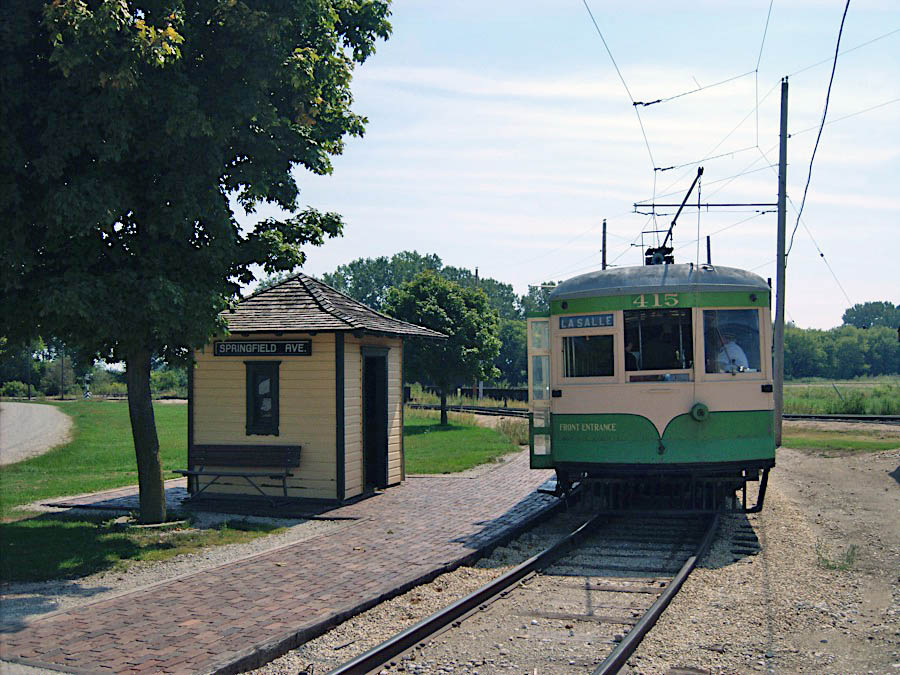
Union, Il / Sep 2009 / RWH
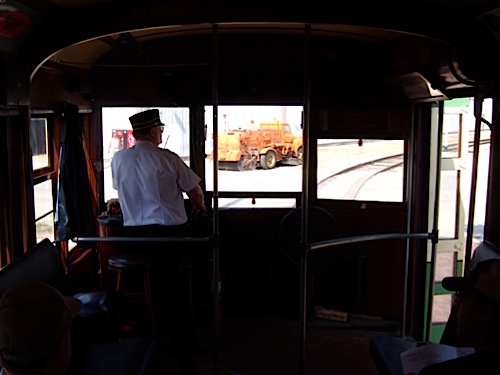
Union, Il / Sep 2009 / RWH
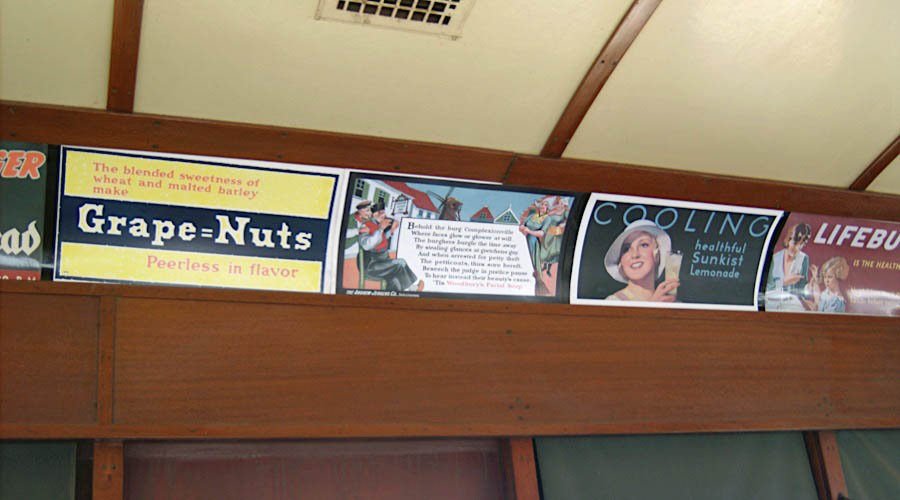
Union, Il / Sep 2009 / RWH
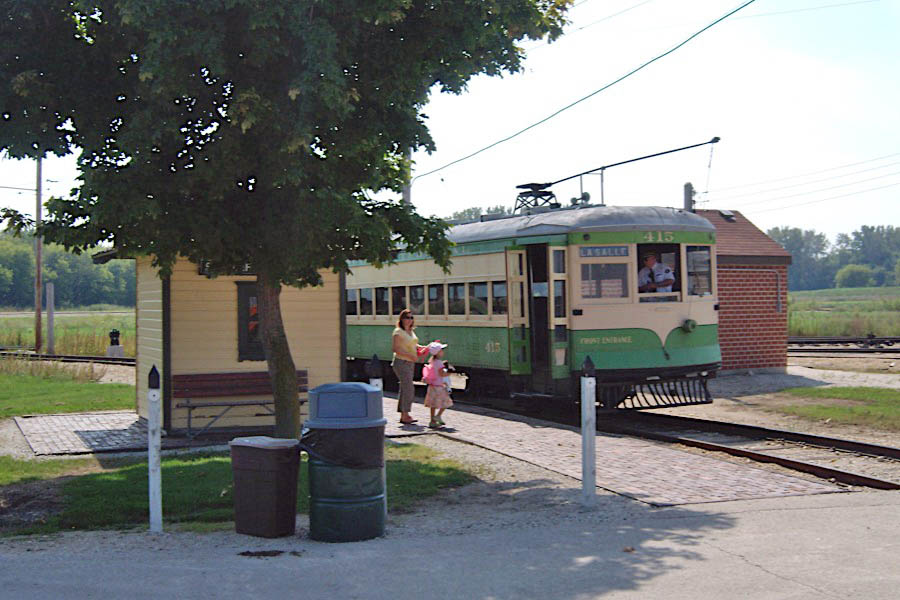
Union, Il / Sep 2009 / RWH
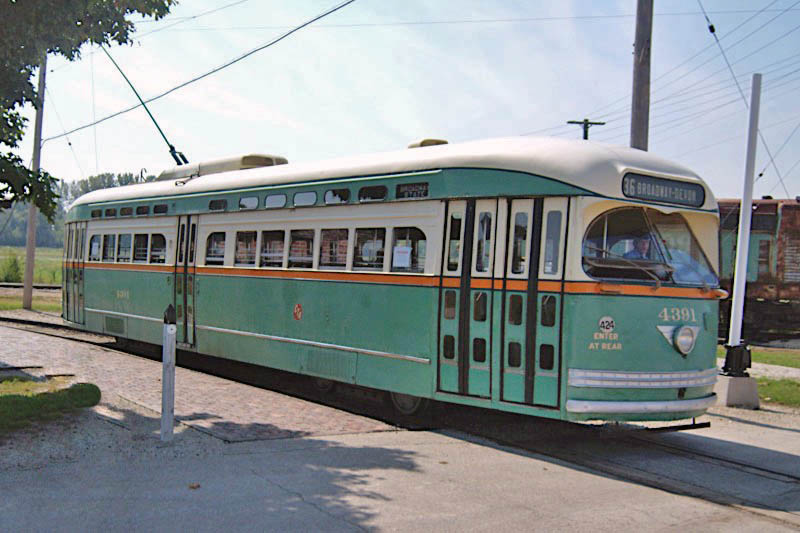
Chicago Transit Authority #4391
Union, Il / Sep 2009 / RWH


Chicago Transit Authority #4391
two man operation

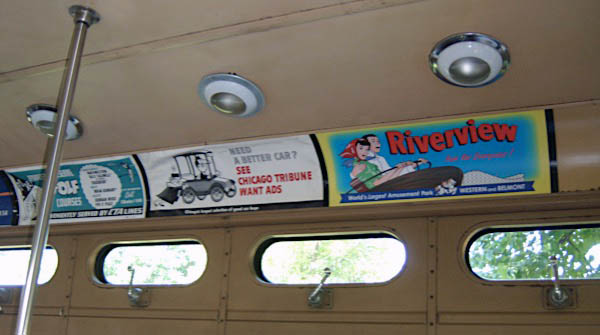
Union, Il / Sep 2009 / RWH
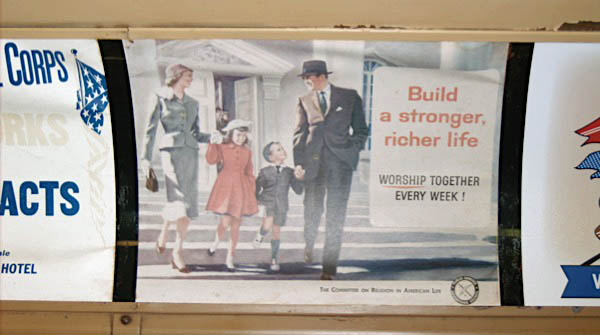
Union, Il / Sep 2009 / RWH
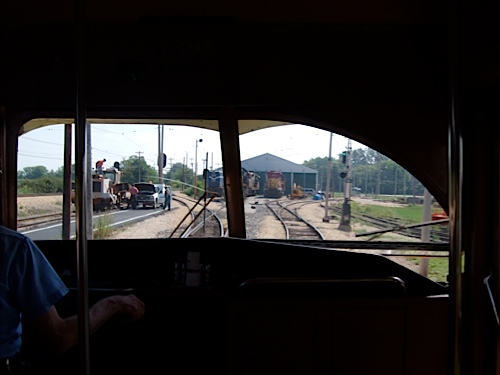
Union, Il / Sep 2009 / RWH
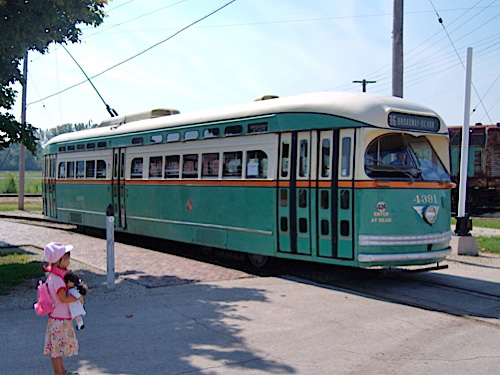
Union, Il / Sep 2009 / RWH
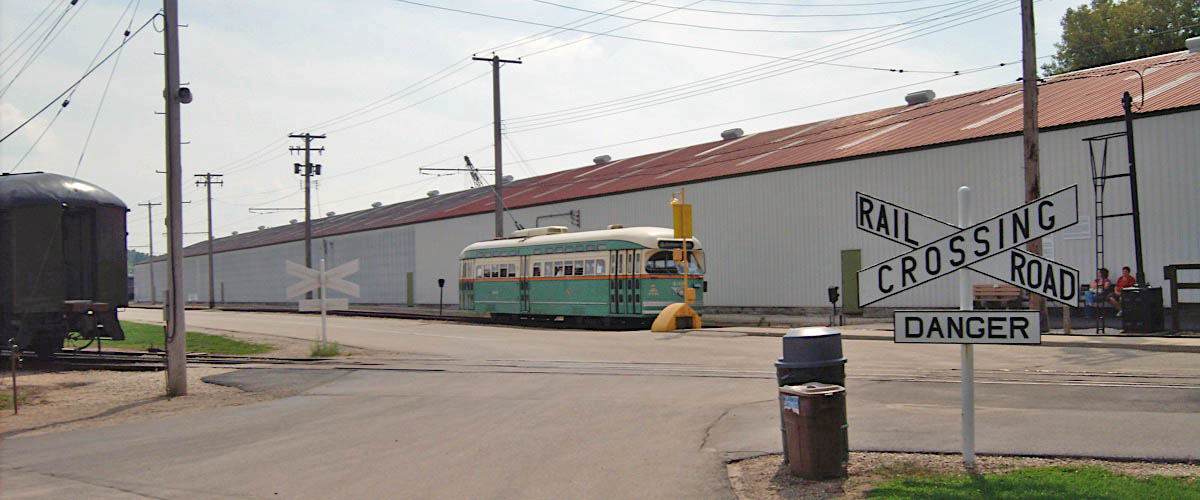
Union, Il / Sep 2009 / RWH
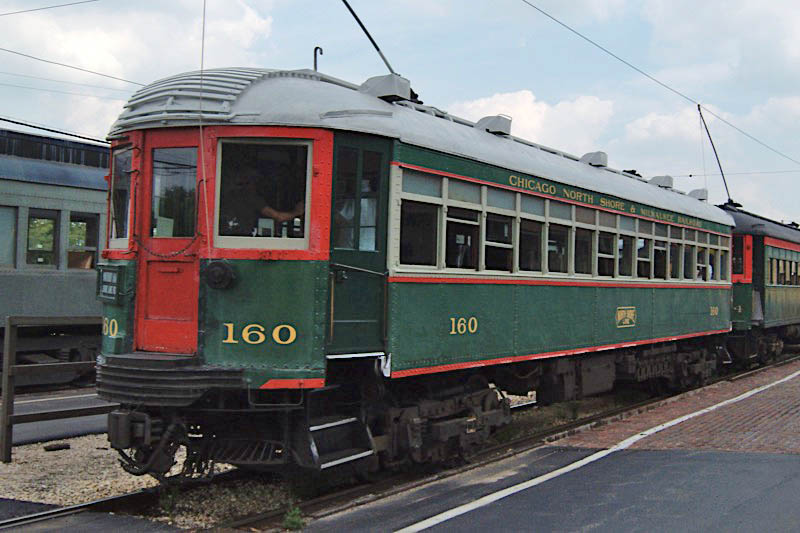
Chicago, North Shore & Milwaukee #160
Union, Il / Sep 2009 / RWH


Chicago, North Shore & Milwaukee #160
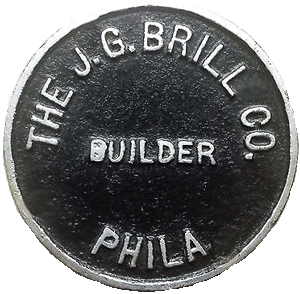
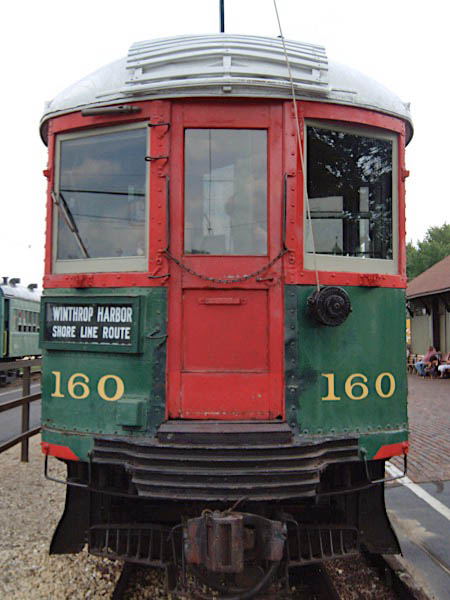
Sep 2009 / RWH
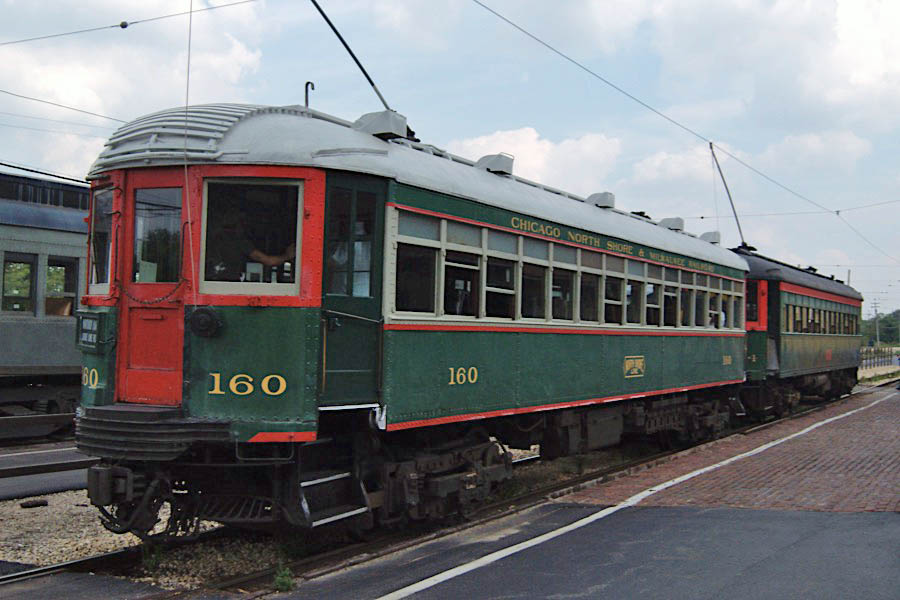
Union, Il / Sep 2009 / RWH
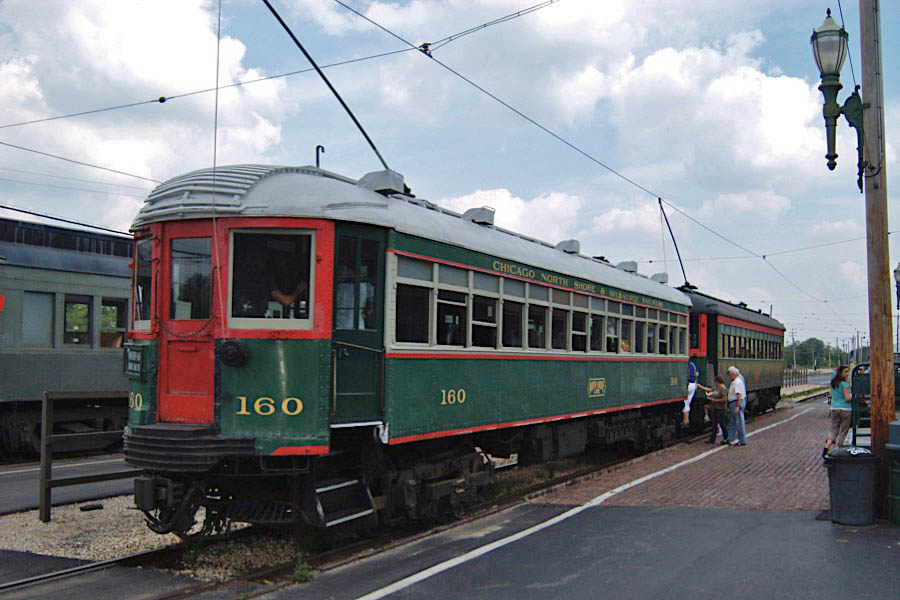
Union, Il / Sep 2009 / RWH
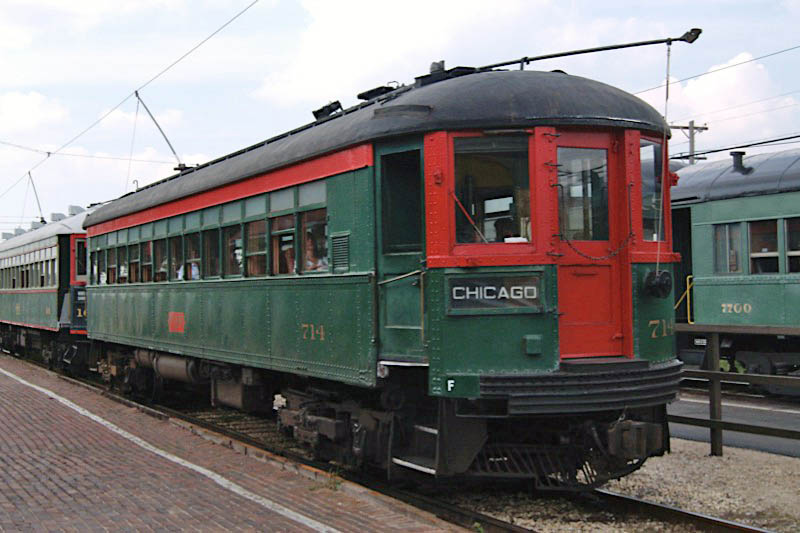
Chicago, North Shore & Milwaukee #714
Union, Il / Sep 2009 / RWH


Chicago, North Shore & Milwaukee #714
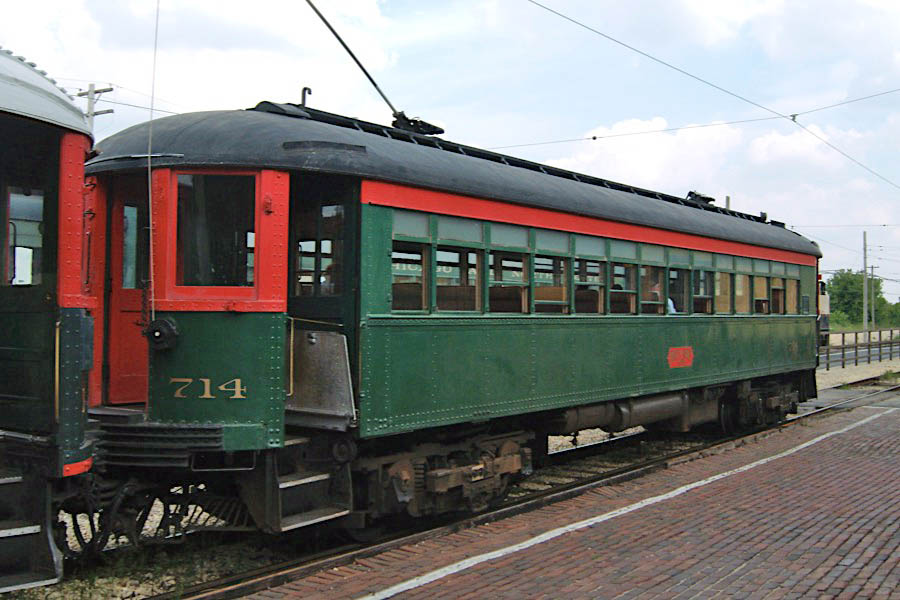
Union, Il / Sep 2009 / RWH
 Electric Trolley Coach
Electric Trolley Coach

The largest collection of trolley coaches in America exists right here at the Illinois Railway Museum - eleven units. This is the only museum in this part of the world with a complete overhead system, providing demonstration rides for our visitors on a regular basis. While the electric trolley coach looks much like a motor bus, it is a very close relative of the electric streetcar. In fact in some cities they were known as "trackless trolleys". The propulsion systems share much of the same technology and both are powered by 600 volts DC. Good performance and quiet dependability were hallmarks of trolley coaches. Transit managements appreciated their low maintenance costs. Trolley coach operations have declined in the United States, but their usage in the rest of the world is increasing with about 350 cities currently under double wire. However with the recent concern about vehicular pollution, a renaissance may yet occur here in America.
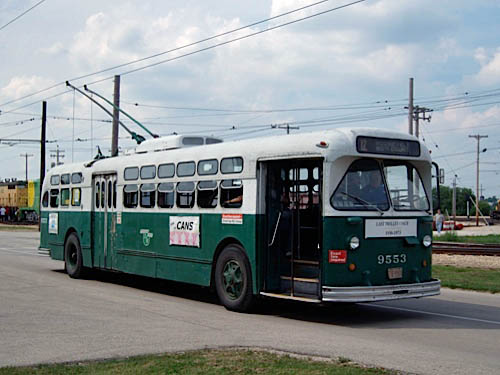
Chicago Transit Authority #9553
Marmon-Herrington TC49 (1951) / Union, Il / Sep 2009 / RWH
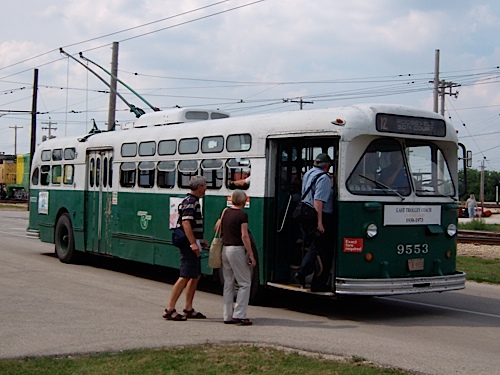
Union, Il / Sep 2009 / RWH
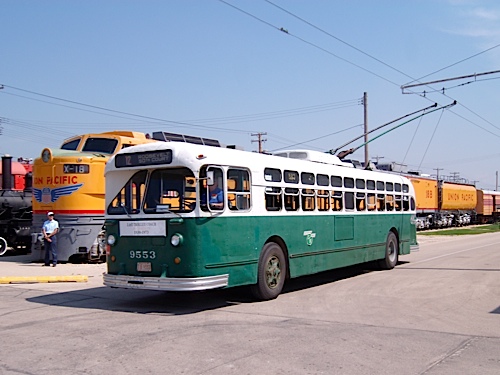
Union, Il / Sep 2009 / RWH
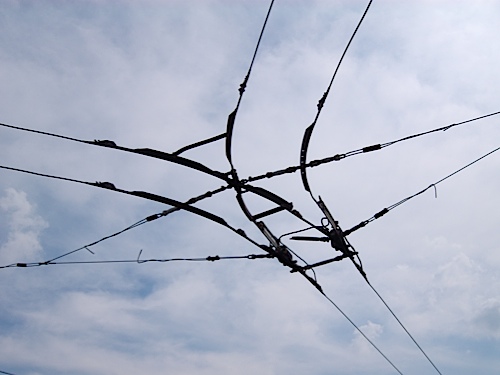
Union, Il / Sep 2009 / RWH
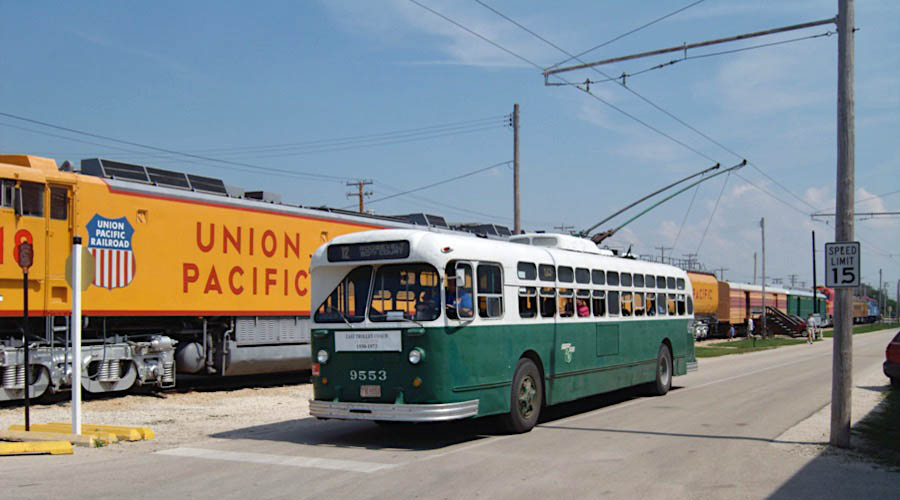
Union, Il / Sep 2009 / RWH

See also our New Orleans trolley coach scrapbook in Streetcars
Links / Sources
- Illinois Railway Museum
- Wikipedia article for Illinois Railway Museum
 The Illinois Railway Museum, as you see it today, is the result of decades of effort by a dynamic group of dedicated volunteers. All of the buildings, track, locomotives and cars were assembled here at Union on what was once farmland. Our main line trackage was laid on the vacant right-of-way of the Elgin & Belvidere Electric railway. Why would rational adults freely contribute so much of their time and treasure to creating this repository of railroad history?
The Illinois Railway Museum is probably the ultimate railroad historian special interest group. Originally formed to preserve one important piece of rolling stock, it has evolved into an educational and historic preservation organization recreating possibly the largest operating demonstration railroad showcase on the North American continent.
The Illinois Railway Museum, as you see it today, is the result of decades of effort by a dynamic group of dedicated volunteers. All of the buildings, track, locomotives and cars were assembled here at Union on what was once farmland. Our main line trackage was laid on the vacant right-of-way of the Elgin & Belvidere Electric railway. Why would rational adults freely contribute so much of their time and treasure to creating this repository of railroad history?
The Illinois Railway Museum is probably the ultimate railroad historian special interest group. Originally formed to preserve one important piece of rolling stock, it has evolved into an educational and historic preservation organization recreating possibly the largest operating demonstration railroad showcase on the North American continent.